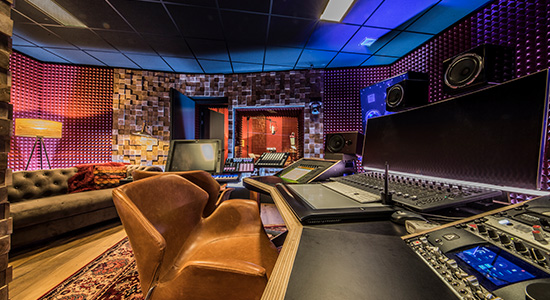-
 Akotherm BasicPolyester Wool, Acoustic Filling & Insulation
Akotherm BasicPolyester Wool, Acoustic Filling & Insulation- Polyester wool sound insulation
- Basic room acoustics
- Filling for acoustic panels
(incl. vat)Starting at £6.59
-
 Akotherm EdgeAcoustic Panel with Faceted Edges
Akotherm EdgeAcoustic Panel with Faceted Edges- High density polyester wool
- Acoustic panel to improve acoustics
- Aesthetic look, value for money
(incl. vat)Starting at £16.63
-
 Akotherm Basic D40Basic Room Acoustics Panel
Akotherm Basic D40Basic Room Acoustics Panel- High density polyester wool panel
- Sound-absorbing acoustic panel
- Excellent acoustic properties
(incl. vat)Starting at £16.86
-
 Akotherm SFSound absorbing acoustic panel
Akotherm SFSound absorbing acoustic panel- For better room acoustics
- Aesthetic smooth finish
- Easy to install panels
(incl. vat)Starting at £19.55
-
 Flamex BasicAcoustic Panels & Insulation
Flamex BasicAcoustic Panels & Insulation- Acoustic melamine foam
- Sound & Noise insulation
- Improve room acoustics
(incl. vat)Starting at £20.72
-
 Flamex EdgeAcoustic Foam Panel
Flamex EdgeAcoustic Foam Panel- Reduces reverb, improve acoustics
- Mount to wall or ceiling
- Decorative edge of 45°
(incl. vat)Starting at £24.54
-
 Flamex PyramidAcoustic Studio Foam Panel
Flamex PyramidAcoustic Studio Foam Panel- Improve room acoustics
- For wall or ceiling
- Decorative studio design
(incl. vat)Starting at £25.06
£41.76 - Improve room acoustics
-
 Piano Acoustic PackageAcoustic Panels & Piano Coasters
Piano Acoustic PackageAcoustic Panels & Piano Coasters- Complete set with:
- 3 Acoustic panels
- 4 Vibrations dampers, piano coasters
(incl. vat)Starting at £204.31
Acoustics, soundproofing, insulation and ventilation for Home Studio, Cinema & Hifi Rooms
Acousticshop offers solutions and products for room acoustics, soundproof and ventilate a home studio, home cinema and hifi rooms. Take a look at our acoustic panels page for room acoustics, Soundproofing pages for walls, ceiling and floors, and Silent ventilation page to silently ventilate your recording studio, home cinema or hifi listening room. If you need advice about rooms acoustics or soundproofing, just let us know, we are happy to help!

 Sound Insulation
Sound Insulation  Soundproofing
Soundproofing  Vibration Isolation
Vibration Isolation  Silent Ventilation
Silent Ventilation  Accessories
Accessories  Thermal & Acoustic Insulation
Thermal & Acoustic Insulation  Standing waves are mainly located in the corners of a room. You can tackle this noise problem by installing thick sound-absorbing panels, such as
Standing waves are mainly located in the corners of a room. You can tackle this noise problem by installing thick sound-absorbing panels, such as